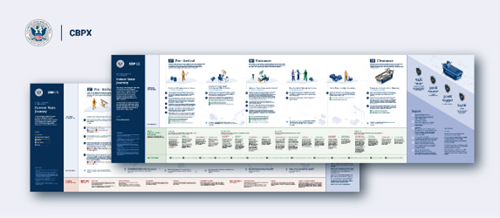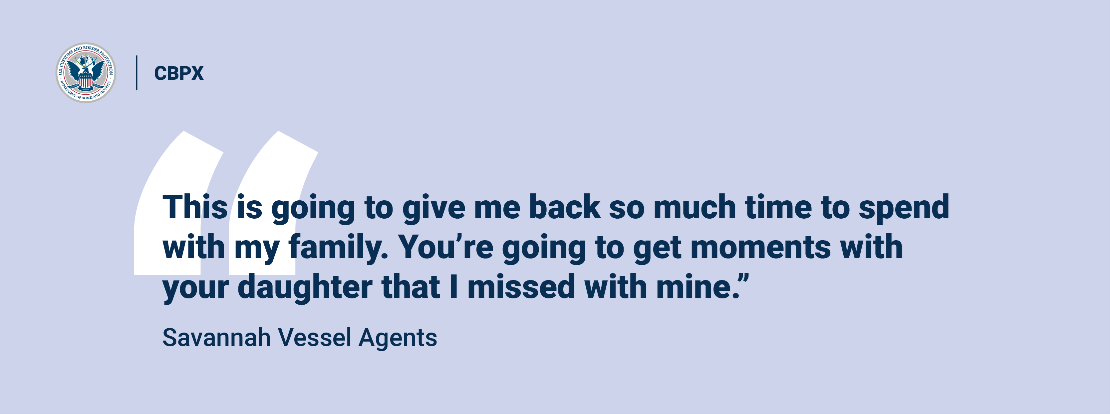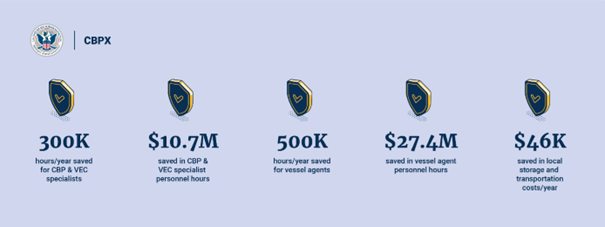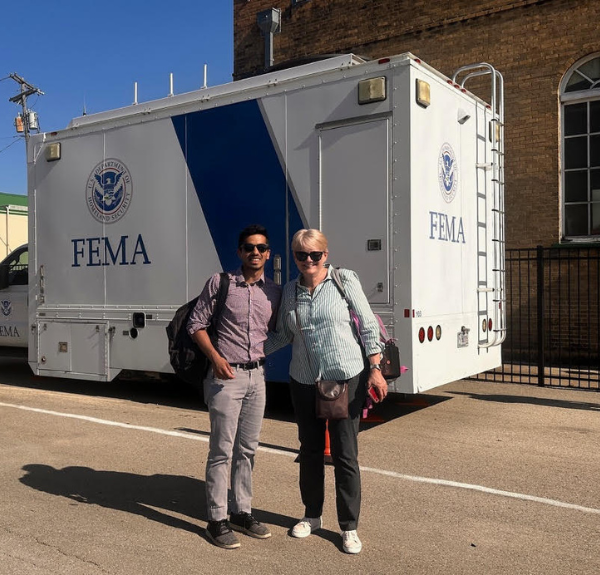The Biden-Harris President’s Management Agenda (PMA) lays the foundation for an effective, equitable, and accountable government that delivers results for all Americans through three main priority areas. The following blog post, authored by the U.S. Customs and Border Protection Experience team, highlights their human-centered design approach in alignment with PMA Priority 2 on Customer Experience.
Following the release of the Executive Order on Transforming Federal Customer Experience and Service Delivery to Rebuild Trust in Government and designation of U.S. Customs and Border Protection (CBP) as a High Impact Service Provider (HISP), CBP created a division dedicated to providing streamlined experiences to its stakeholders. The CBP Experience (CBPX) team conducts comprehensive assessments and identifies actions to improve delivery of high-impact services, including our nation’s import and export processes.
Vessel Entrance and Clearance
Each day, vessels arrive by sea to the U.S. carrying billions of dollars of consumer goods. Every vessel that arrives must go through the vessel entrance and clearance (VEC) process to ensure that goods and people entering and leaving the U.S. are in compliance with CBP regulations. The process touches numerous stakeholders, both commercial and government:
- Vessels: The ship’s captain and crew must document and declare everything on board.
- Vessel agents: U.S.-based individuals and companies help vessels coordinate arrival and clearance with CBP.
- VEC specialist: An individual from CBP responsible for processing VEC forms.
- CBP officers: Officers who conduct on-vessel law enforcement activities, and sometimes process VEC forms.
Because of the size and scale of the process and its important role in trade, CBP is committed to improving and streamlining the experience. The original process required extensive coordination between vessels, vessel agents, and CBP. As a paper-based process, it has a high potential for human error and poses heavy administrative and mental burdens for CBP customers and employees.
The new Vessel Entrance and Clearance System (VECS) digitizes and automates vessel entrance and clearance, streamlining the process.
VECS Experience
The VECS application development process followed human-centered design principles. The application owner, a former CBP officer, prioritized officer experience and vessel agent experience. The following design principles guided the process:
- Simplify: Create an easy-to-use, streamlined, and digital VEC process that reduces redundancy at each step, and eliminates opportunities for error, confusion, and delay.
- Standardize: Standardize business operations and procedures to improve the customer experience and increase voluntary compliance.
- Empower: Provide users with the tools and information they need to carry out their missions efficiently.
- Alleviate: Lessen or eliminate the physical, mental, financial, and procedural burdens placed on CBP personnel and customers.
The design team gathered input from CBP officers, VEC specialists, and vessel agents. During the VECS pilot rollout, users had a chance to move through the VECS process and provide real-time feedback.
VECS Journey Map

As part of CBP’s customer experience action plan, the CBP Experience team documented the user journey for both the paper-based VEC process and the digital VECS journey. These journey maps document the user experience and identify pain points, opportunities, and impact.
To develop the VECS journey maps, the CBPX team conducted the following research:
- Observational: Field visits to the port to observe the process and collect real life insights.
- Qualitative: Stakeholder interviews to understand the experience and sentiments of users for the current state and future state processes.
- Quantitative: Surveys to record the time it takes to complete different steps in the paper-based and digital process.
Users shared positive feedback about VECS, with one vessel agent saying, “This will bring CBP into the 21st century,” and “This will allow me to focus more on enforcement activities and less shuffling paperwork.”
A Savannah Vessel Agent said to his peer, “This is going to give me back so much time to spend with my family.” The older agent responded, “You’re going to get moments with your daughter that I missed with mine.”

All of this came together to tell the story of the VECS user journey and showcase the impact the VECS application would have on both CBP and vessel agents. The improved VECS experience would amount to:
- 300,000 hours/year saved for CBP and VEC specialists
- $10.7M saved in CBP and VEC specialist personnel hours
- 500,000 hours/year saved for vessel agents
- $27.4M saved in vessel agent personnel hours
- $46,000 saved in local storage and transportation costs/year
- Time returned to CBP’s mission

Looking Ahead
As the CBP Experience office worked to enhance engagement with the public, aiming to return time to the mission and reduce administrative burden, it identified areas of experience excellence across CBP, including the VECS program. The team is documenting, applying, and scaling these successful practices to other mission areas. Focusing on customer experience has helped build trust with stakeholders, reduce the amount of time spent on forms and manual tasks, and return time to mission-critical tasks. For Fiscal Year 2024, customer experience commitments included focusing on improving the Global Entry and Automated Commercial Environment (ACE) experiences. For more information about VECS and to see the impact of this initiative in action, visit the CBP website.
Stay Informed
Follow along with Performance.gov on LinkedIn and Twitter as we highlight different agencies and their goals. We will continue to update Performance.gov quarterly with progress on agency and PMA priorities and strategies.
Subscribe to our newsletter to receive updates in your inbox.




